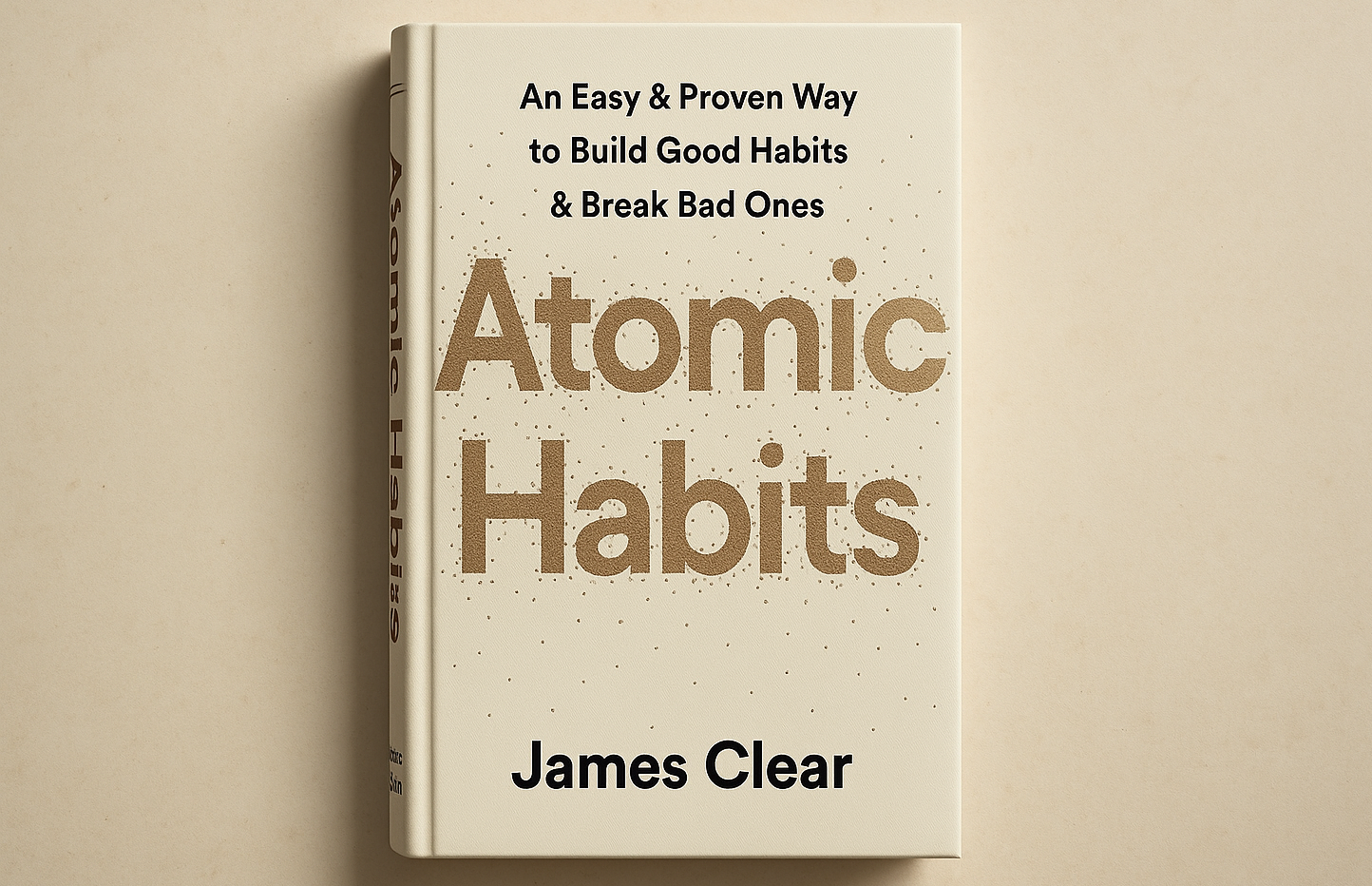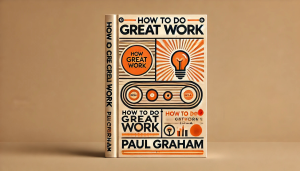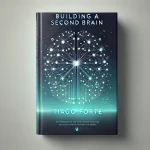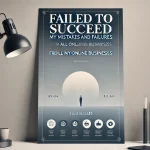A TEDx Talk I just listened to was about the actual simplicity of reaching very ambitious goals that everybody aspires to. If you are also interested in doing so, like me, I encourage you to watch it as well. The speaker was basically indicating that it’s about the tiny decisions in our everyday life. For example, it’s not just about deciding to run a marathon in 6 months, but after this major decision, it now comes to the minor decision of putting the phone aside and going for that threshold run that you actually do not feel like doing at that moment. It is not the decision of running a marathon but running on that specific day which will determine the final outcome of either completing or failing a marathon.
The speaker gave an example of himself as he decided to listen to German lectures instead of music on his way to his job for 1.5 hours round trip. After a while — three months as far as I remember — he traveled to Berlin for an intensive German course and spoke to natives. After all that, he was capable of speaking German. But it was these tiny little pieces of the big picture, where he just listened to the lectures instead of music, that determined his success. He is referring to a “divide and conquer” strategy.
We have been hearing such advice about building habits everywhere. This speech instantly reminded me of the “Set systems, not goals.” motto from Atomic Habits, which emphasized the significant compound effect of doing something at a regular frequency, like every day. So I decided to finally compose a review of the book Atomic Habits by James Clear.
How Habits Work
“A habit is a routine or behavior that is performed regularly — and, in many cases, automatically.” James Clear subdivides the parts that make up a habit into four: cue (1), craving (2), response (3), and reward (4). Let’s have a deeper look at what they really represent.
Cue
The cue is basically the first spark that makes you want to take some action or do something for a specific reward. It’s the trigger of a habit. For instance, you hitting a stumbling block on a task while studying is a cue for the behavior of picking up your phone and starting to scroll.
Craving
The craving is defined as “the motivational force behind habits.” In our example, the urge to relieve frustration due to the feeling of being stuck after hitting a stumbling block is the craving.
Response
This is the actual performance of a habit. So, as you pick up your phone after your craving to relieve your frustration, that’s the response.
Reward
The last stage of a habit — the end goal — determines whether a behavior will be repeated and become a habit. This serves two purposes: to satisfy (1) and to teach (2). If the satisfaction part fails, the behavior won’t be repeated and won’t evolve into a habit. The teaching part helps us learn which actions are worth remembering. “Our brain is a reward detector,” says James Clear.
Furthermore, the first three stages all initially occur for this last stage: “The cue is about noticing the reward. The craving is about wanting the reward. The response is about obtaining the reward.”
And in case the reward is not worth all this effort, it won’t ever be repeated again: “Without the first three steps, a behavior will not occur. Without all four, a behavior will not be repeated.”
If after you pick up your phone, scroll for hours, and feel miserable afterward — realizing you still have the task unfinished and a messed-up mind full of trash content — your brain says “never ever again,” then you likely won’t repeat the same mistake. But in case your dopamine levels after relieving your frustration outweigh the consequences and the reward of this behavior was actually worth it according to your brain, then it probably turns into a habit.
With that, we come to our four laws to optimize each of these stages of a behavior or a habit — both for promoting the good ones and avoiding the bad ones.
1st Law: “Make It Obvious”
The first law is about the cue. Have you ever realized that your phone is very likely to disturb your work session as it is next to you on your desk, whereas you barely think about it if it’s shut down and not anywhere near you? This is basically what our first law of behavior change indicates: “Make the cues of good habits obvious, and of bad habits invisible.”
For example, if you want to read before sleep, put your book near your bed (make it obvious). Or, if you want to quit eating snacks, remove them from their regular place (make it invisible) and better replace them with fruit (make it obvious).
To achieve this, Clear presents various strategies:
1.1 Write Them Down
Writing the cues that you know have to be made obvious or invisible can help you become more aware of your goals.
1.2 Use Implementation Intentions
This is a simple technique presented by the author which refers to precise definitions of what, when, and where: “I will [behavior] at [time] in [location].” Combined with the first strategy, this can have a big impact on one’s habit formation. An example would be: I will go for a short walk at the time after I just woke up in the park near my home.
1.3 Use Habit Stacking
With this technique, the author refers to “chaining habits together starting with a very specific cue”: After [current habit], I will [new habit]. Let’s say you have a routine of making your bed every morning you wake up and you want to start stretching. Then you could say (ideally write down) “After I make my bed, I will do my morning stretch.”, using habit stacking.
1.4 Design Your Environment
Designing the environment is, in my opinion, the most effective one of these. You should design your environment according to your goals and desired habits. The whole idea of “make it obvious or invisible” actually relies on this point. The examples above about reading before bed and avoiding snacks are both examples of designing the environment for good. Do not forget: self-control is a short-term solution; you have to optimize your environment for the long run.
1.5 Remove the Cues (Make It Invisible)
This is the inversion of “make it obvious,” which applies to bad habits. Turn off that phone and remove it from your working space!
2nd Law: “Make It Attractive”
This law applies to the craving. You have noticed the cue; you are now aware of the possible action. Now it’s time for your brain to decide if that action is attractive enough for you to take. For example, without the cue — e.g., your book not placed next to your bed — you do not remember that you wanted to read before sleeping, but without the craving, you do not want to do it because it’s not attractive enough. At this point, the author again has several solutions to offer:
2.1 Temptation Bundling
This basically indicates that you should combine or pair a behavior you really enjoy with a behavior that you want to acquire as a new habit. For example, I really like my morning coffee; so I told myself: I will enjoy my morning coffee while reading my book. So it is now automated! Whenever I grab a coffee I tend to want to read while drinking it. The author suggests combining this technique with habit stacking:
- After [current habit], I will [needed habit]. (habit stacking)
- After [needed habit], I will [wanted habit]. (temptation bundling)
2.2 Right Culture
This is a very straightforward and also very important one: Join a culture where your desired habits are the norms.
2.3 Motivation Rituals
This refers to doing something you love immediately before a difficult habit. This will cause the difficult habit to become more attractive. To continue with my coffee and reading habit: this ritual became something I truly enjoy. But in the mornings, when my cognitive energy is at its peak, I want to get hard things done, do some progress. But it usually doesn’t seem to be that attractive. So I apply, even though it was unconscious until now, a motivation ritual and enjoy my morning coffee while reading for half an hour, and then immediately jump into work.
2.4 Reframe Mindset (Make It Unattractive)
The idea of this one is to simply highlight the benefits of avoiding bad habits and reviewing them to refresh one’s awareness.
3rd Law: “Make It Easy”
The 3rd law of habit formation is “make it easy.” After you have seen the cue and received the craving, now it’s time for you to actually perform the habit: the response. And if the performance of the habit is effortful and difficult, you likely won’t do it anyway despite your progress with the cue and the craving. So you have to make the performance of that habit easy. How?
3.1 Reduce Friction
Reducing friction is the main takeaway of this law and simply refers to minimizing the friction towards a desired behavior. It neither makes sense nor is it easy to form habits in high-friction environments, Clear says:
“We try to follow a strict diet while we are out to dinner with friends. We try to write a book in a chaotic household. We try to concentrate while using a smartphone filled with distractions. It doesn’t have to be this way. We can remove the points of friction that hold us back.” (pp. 153–154)
3.2 Prime the Environment
Priming the environment and reducing friction are strongly interconnected; one is basically the consequence of the other. This aspect simply aims to make future behaviors easier.
Let’s say you want to go to the gym early in the morning after you just woke up. Is it easier to get all your stuff ready after you wake up — pick your clothes and towel, fill your bottle, prepare your gym bag — or is it easier to just grab it and get going? I assume the second one is way easier, and so you are more likely to do that behavior and turn it into a habit. So preparing your bag in the evening reduces the friction in the morning and makes the performance of the behavior much easier.
3.3 Master Decisive Moments
This one specifically is the one that made me connect the TEDx Talk I had watched and this book. Our day, or even our life, is subdivided into very tiny little decisions which either have a good or a bad result. Yeah, just like a binary system and transistors consisting of 1’s and 0’s. And if you have millions and billions of these transistors, you have a day, a year, a life.
I do not aim to turn this into a CS class or a philosophical statement. But if you think of your goals with this idea in your mind, you will be aware that those big goals you want to achieve come down to these tiny transistor-like decisions of 1’s and 0’s.
You want to become a writer: Do you manage to leave all the distractions aside and write something down at that decisive moment? You want to build yourself and become a valuable individual: What do you do when you need to put in some effort and learn or build something new at that moment? So, you need to optimize your small choices to achieve your big goals. As those optimized small choices compound, you will achieve your goals.
3.4 2-Minute Rule
The 2-minute rule is initially there to help you get started on something. You basically downscale a behavior/habit into 2 minutes, which you really “don’t feel like doing at the moment.” For example, you really have to read but you don’t feel like reading at that moment. So you just tell yourself to read for 2 minutes. As you have read for 2 minutes, now you can decide to either continue reading or quit for today. But do not forget: you really have to be aware that you initially intend to perform that behavior for 2 minutes. Because if you try to trick yourself into using this method to get started doing something, your brain will learn this trick and avoid applying it again. So, the real matter here is mastering the art of showing up.
3.5 Invest in Things That Lock Future Behavior
I unconsciously apply this strategy too often in my life. It’s about investing in things that will help you automate the behavior, or encourage you to do it to a greater degree. For example, buying a water filter so drinking clean water is your default choice. Or, for example, I myself have recently invested in a quality chef’s knife because I wanted to turn cooking good meals into a habit and I wanted something to encourage me. I now look forward to cooking whenever I think of it. Or I generally invest in things that I think will contribute to my growth and help me form new good habits in advance without much doubt — usually online courses or services.
But I also want to emphasize the point that one really has to be convinced that the investment won’t just be a temporary desire, a wish, but an actual investment that will last long and help one form or automate good habits.
3.6 Increase Friction (Make It Difficult)
This is the inversion of reducing friction and it is about making the response difficult. For instance, leaving your phone in another room remarkably increases the friction.
3.7 Commitment Device (Make It Difficult)
The commitment device method might have intersections with investing in things that lock future behavior. For example, paying for an online course you really aim to accomplish is a commitment device example. It is basically about making your bad future actions more costly, and through that, it aims to prevent these bad actions.
4th Law: “Make It Satisfying”
Last but not least, we have the 4th law of behavior change: Make it satisfying. The reward might be considered the most crucial stage because if it is an unsatisfying reward for a behavior you want to turn into a habit, it is very unlikely to achieve it. So the “make it satisfying” law can make the difference between your admired version with all good habits and the loser version with bad habits.
4.1 Reinforcement
One of the most used ways to train an AI model nowadays is Reinforcement Learning. It basically works with the “What is immediately rewarded is repeated, and what is immediately punished is avoided” principle. So we can and even should apply this to our habit formation to make the reward more satisfying. Reward yourself immediately after a good habit.
A personal thought and advice: Do not immediately think of scrolling after a work session. Instead, find sustainable alternative joys that do not peak and crash your dopamine levels and make you want to do nothing. That way you also will be able to have fun and joy from tiny things — like chatting with a friend of yours after doing a workout or preparing yourself a fruit salad after your work session, and so on.
4.2 Make “Doing Nothing” Enjoyable
This one was a little bit confusing and philosophical for me at the beginning, but later it made sense after I grasped the concept. It suggests that instead of seeing the unsatisfying reward of avoiding a bad habit, shift your focus to the beneficial side and find the true satisfaction that lies underneath.
For example, if you did not eat that very delicious-looking dessert, instead of being unsatisfied that you missed that taste, learn to be satisfied with the pride that you have stayed loyal to your goals and have done what was supposed to be done.
4.3 Habit Tracker
I cannot emphasize enough how important this one is. It is very simple but one of the most effective methods, if not themost effective.
Let me make it more clear with a short story of mine. I was regularly using a habit tracker on my Notion for a while. It was nice — not extreme, but I was getting things done and had a working system. But then I decided to completely shift to time blocking and use a calendar, which also is a very useful technique. But I then removed both my daily to-do list and my habit tracker. For a while it was fine, but then… I was totally lost some days not knowing what to work on, and my habits were all messed up. So I immediately went back to using a habit tracker. I now use time blocking combined with my habit tracker, which I get the most value from.
So: Track your habits! Track your damn progress!!! Do not underestimate the importance of tracking your progress; it is one of the most satisfying feelings to make progress and be able to observe it! So create a habit tracker now! It might be digital, analog, a piece of paper, a Notion page, a calendar… Simply write your habits you want to track and the days of the week, month, year — whatever — and start tracking them.
4.4 Never Miss Twice
One of the keys in the habit tracker is not to break the chain. You ideally want not to miss a day. But in the end, we are human beings and not robots. It is normal to miss once at some point. This is not a big problem as long as you have your reasons and do not repeat it! So get immediately back on track and continue where you left off. Because “Missing once is a mistake, but missing twice is the start of a new habit.”
4.5 Accountability Partner (Make It Unsatisfying)
You can ask a friend or family member to watch your behavior, which might help you to stay on track with their motivation boost.
For example, you can combine this with the commitment device and increasing friction methods and have your best friend set your social media screen timer password so that you become dependent on them whenever you want to spend more time on social media. See? You increased the friction of an unwanted habit, made your bad future actions (like scrolling for hours) harder using a commitment device, and have an accountability partner to support you in your progress.
4.6 Habit Contract (Make It Unsatisfying)
You can set up a symbolic contract to make the deal more serious and the costs of bad habits more painful, so you actually avoid them.
For example, set up a rule with your friend who controls your screen timer app that you will have to pay them $10 every time you ask for them to extend your screen time. Using this method, you now make the reward of an unwanted habit immensely unsatisfying.
On Action
“Focus on being action, not on motion,” says the author. He defines “motion” as “strategizing, planning, activities that do not produce results” — in my words from the last article, “vibing to do the thing.”
Motion can be useful sometimes, but usually it is a way for us to trick our brain into thinking we are being productive, even though we are actually just procrastinating the action part.
Action is the “doing the thing” part which delivers an outcome. So one should invest the majority of their time focusing on action.
Do not forget: “The most effective way to learn is: practice, not planning.” So you just have to get your reps in. Another aspect related to this: “Start with repetition, not perfection.”
On Talent
“Talent does not replace hard work, but it determines what to work hard on.” So you should carefully experiment with what comes easily to you and what you enjoy doing, and shift your focus towards it.
You may not always be certain about what you want to do — I’m not, either. So I try to apply exactly the method that the author suggests here, which is to try as many possibilities as possible and along the way shift my focus to my best selections, while continuing to experiment.
Meanwhile, you can ask yourself some questions to optimize your selections, for example:
- What feels like fun to me, but work to others?
- What makes me lose track of time?
- Where do I get greater returns than the average person?
- What comes naturally to me?
Yet still, do not overcomplicate this process. Pick your best selection and keep going. Therefore, the earlier you start experimenting, the better.
On Motivation
“Really successful people feel the same lack of motivation as everyone else. The difference is that they still find a way to show up despite the feelings of boredom.” Yes, boredom! Boredom is in fact the greatest threat to success, not failure, adds Clear.
So why do we get bored? Usually because of monotony: as a habit becomes a routine, it will become less interesting and less satisfying — so it becomes boring. Exactly at this moment it is up to us to decide whether we handle boredom and keep going, or follow our human instincts and quit because of it.
Another aspect about motivation is connected with a rule named the “Goldilocks Rule,” which prescribes that a task needs a just-manageable difficulty. If it’s too easy you will get bored; if it’s too hard, then you will fail, not understand, and again lose motivation. But if it’s in the middle and the task is actually challenging but doable, you will be engaged.
On Mastery
Our final goal should be mastery. Shakespeare, Einstein, Beethoven, Newton, Steve Jobs — all of them were great masters in their field. To achieve mastery, habits are necessary but they are not adequate. The secret formula to achieve mastery is to combine habits with deliberate practice.
Meanwhile, it’s also very critical how you deal with changing circumstances, adds Clear. You have to adapt yourself instead of standing against them: “Like water flowing around an obstacle, your identity works with the changing circumstances rather than against them.” Then reflect on your habits and beliefs on a regular basis. In a constantly changing world, the “reflect & adapt” framework combined with mastery is the only way to achieve great things.
All in all, these are the core teachings of, to my taste, one of the best books on personal development, Atomic Habits. Now knowing how habits work and what to do to optimize them, you should immediately get to action and pick some of the strategies above that you like the most and think would suit your situation best — and try to apply them in your daily life.
My personal favorites that I try to apply to my life as much as possible are, for example: 1.4 Design Your Environment for the cue, 2.2 Right Culture and 2.3 Motivation Rituals for the craving, 3.1 Reduce Friction, 3.2 Prime the Environment and 3.3 Master Decisive Moments for the response, as well as 4.3 Habit Tracker and 4.4 Never Miss Twice for the reward.
Last but not least, your ultimate goal has to be mastery. To achieve mastery, you must work hard on things that come easily to you, always be in action, and focus on getting things done. You must also embrace boredom and be aware that it is inevitable — but the only way to achieve your goals is to persevere through this great threat to success.







